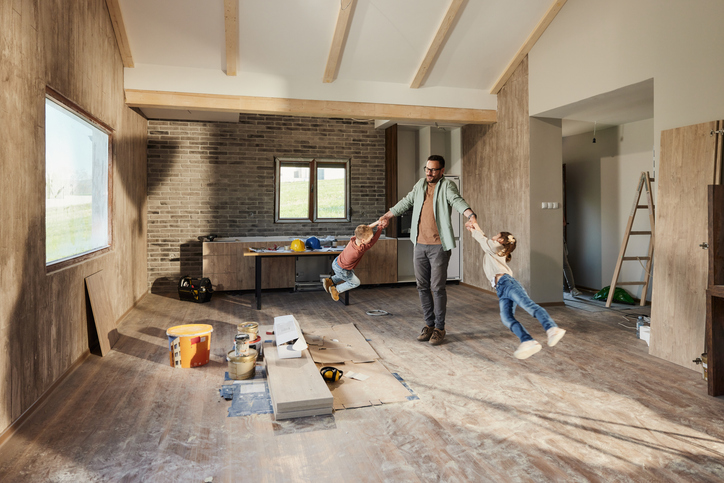Transforming Dad’s space was a project I didn’t realize I needed to take on until I saw the cluttered chaos of his old workshop. Like many dads, mine had a tendency to hold onto things “just in case” or because they held some sentimental value. Over the years, the collection of tools, random wires, half-finished projects, and outdated gadgets had grown into an overwhelming mess. It was time for a change—a transformation. Not just for the sake of tidiness but to give my dad a space he could truly enjoy again.
Decluttering can always feel like a daunting task, especially when you're dealing with years (or decades!) of accumulation. But with the right mindset and a practical plan, it can be more rewarding than you’d expect. Let me take you along on the journey of how I decluttered and transformed my dad’s space into something functional and inspiring. Hopefully, these steps will inspire you to tackle a similar project, whether it’s for your dad, a loved one, or even yourself.
Step 1: Assess the Space and Set Goals
The first step in any decluttering mission is to assess the space. For my dad, this meant stepping into his workshop and taking stock of what was actually there. It was overwhelming at first, but I knew that understanding the scope of the project would help me create a realistic plan.
What I did:
- Walked through the entire space, noting problem areas (e.g., workbench cluttered with random tools, shelves crammed with boxes of unknown contents).
- Asked my dad what he used the space for the most. Did he still work on projects? Were there tools he never touched anymore?
- Set clear goals: We wanted to create a space where he could work on new hobbies, have easy access to tools he actually used, and get rid of things that no longer served a purpose.
Step 2: Involve Dad in the Process
At first, I thought it would be easier to just declutter the space on my own. But this wasn’t just a storage room—it was my dad’s personal domain. Involving him in the process was crucial, not only to ensure we kept items that truly mattered but also to make him feel part of the transformation.
How I approached it:
- We tackled the space together, one section at a time. I’d hold up items and ask, “Do you really need this?” or“When’s the last time you used this?”
- We created three piles: Keep, Donate/Sell, and Trash. Anything broken or unusable went into the trash pile. Items in good condition that he didn’t need anymore went into the donate/sell pile.
- For sentimental items he couldn’t part with but didn’t need on display, we created a “memory box” for safekeeping.
Step 3: Declutter in Zones
The most effective way to avoid getting overwhelmed during a decluttering project is to break it into zones. In my dad’sspace, we divided the workshop into specific areas: the workbench, shelving units, tool storage, and general floor space.
Zone-by-zone breakdown:
- Workbench: This was the heart of the workshop, but it was completely unusable because of the clutter. We cleared everything off, cleaned the surface, and only put back the essentials—tools and materials he used frequently.
- Shelving Units: These were crammed with old boxes, manuals, and random items. We sorted through everything, labeling storage bins for better organization.
- Tool Storage: My dad had tools scattered everywhere. We installed pegboards above the workbench to hang commonly used tools and used a toolbox for smaller items.
- Floor Space: The floor had boxes of junk that had been there for years. We cleared it completely, which made the space feel instantly bigger and more functional.
Step 4: Introduce Functional Storage Solutions
Once the decluttering was done, we needed to make sure the space stayed organized. That meant investing in storage solutions that would keep everything in its place while still being easy to access.
What worked for us:
- Clear plastic bins for categorizing smaller items like screws, nails, and other hardware.
- Magnetic strips for hanging tools like wrenches and screwdrivers.
- Label makers to clearly mark bins and drawers.
- Stackable storage containers to maximize vertical space on shelves.
- A rolling cart for portability when working on projects in different areas.
Step 5: Add a Personal Touch
Decluttering was only half the battle. Once the space was clean and organized, we wanted to give it a personal and inspiring touch. After all, this was supposed to be a space my dad could enjoy.
How we personalized the space:
- Hung up a few framed photos of him working on past projects. It added a nostalgic and motivating vibe.
- Bought a comfortable stool so he could sit comfortably while working at the bench.
- Installed better lighting to brighten up the space and make it more inviting.
- Added a small shelf for a radio. My dad loves listening to music while he works, so this was a thoughtful addition.
- Painted the walls a light color to make the space feel bigger and cleaner.
Step 6: Develop a Maintenance Plan
The transformation was amazing, but I knew it wouldn’t last unless we put a system in place to maintain the space. Without one, it would be easy for clutter to creep back in.
Our maintenance strategy:
- Scheduled a monthly “clean-up” day where my dad goes through the space and ensures everything is in its proper place.
- Created a rule: If a new item comes in, something else has to go out. This prevents the accumulation of unnecessary items.
- Labeled everything clearly so it’s easy to find and put things back in the right spot.
- Encouraged him to finish one project at a time rather than starting several and leaving them unfinished.
Reflections on the Transformation
When we finally finished transforming my dad’s space, the difference was night and day. The cluttered, chaotic workshop was now an organized, functional haven where he could work on his hobbies without stress. Seeing the smile on his face as he walked into his “new” space made all the effort worth it.
This project also taught me a lot about the emotional side of decluttering. It’s not just about getting rid of things; it’s about creating a space that reflects what’s truly important. For my dad, that meant keeping the tools he loved, the memories that mattered, and letting go of the rest.
Highlights of the Process
- Set goals before starting: Know what you want to achieve before diving in.
- Involve the person whose space it is: Respect their attachment to items and involve them in decisions.
- Declutter in zones: Focus on one small area at a time to avoid feeling overwhelmed.
- Invest in smart storage: Use bins, labels, and shelving to keep things organized long-term.
- Add personal touches: Make the space feel special and inviting with decor and thoughtful details.
- Create a maintenance plan: Ensure the space stays organized with regular check-ins and simple rules.
Transforming my dad’s space wasn’t just about decluttering—it was about giving him a place where he could work, relax, and feel proud of. Whether it’s a workshop, garage, or even just a corner of a room, taking the time to declutter and refresh a space can have an incredible impact. If you’re thinking about tackling a similar project, go for it—you won’tregret it!


